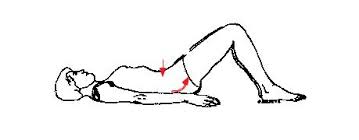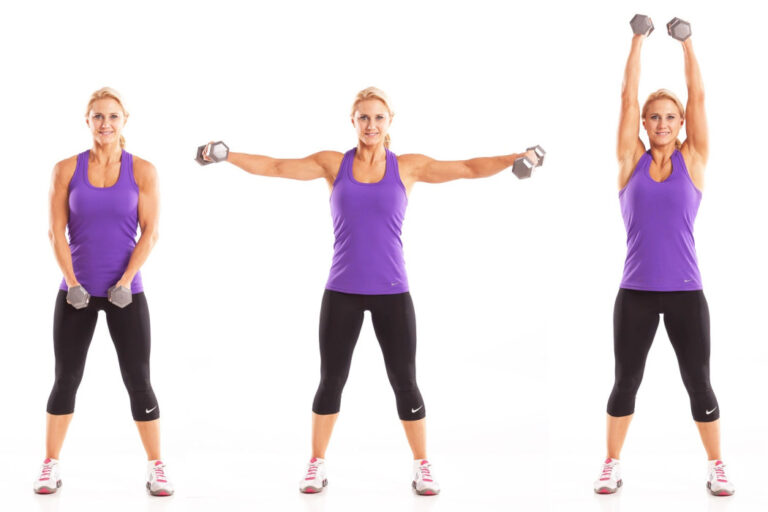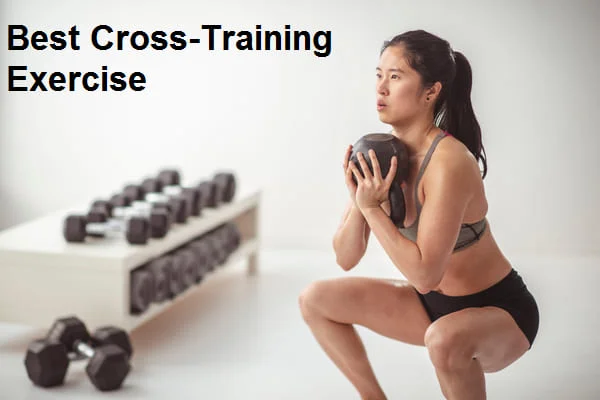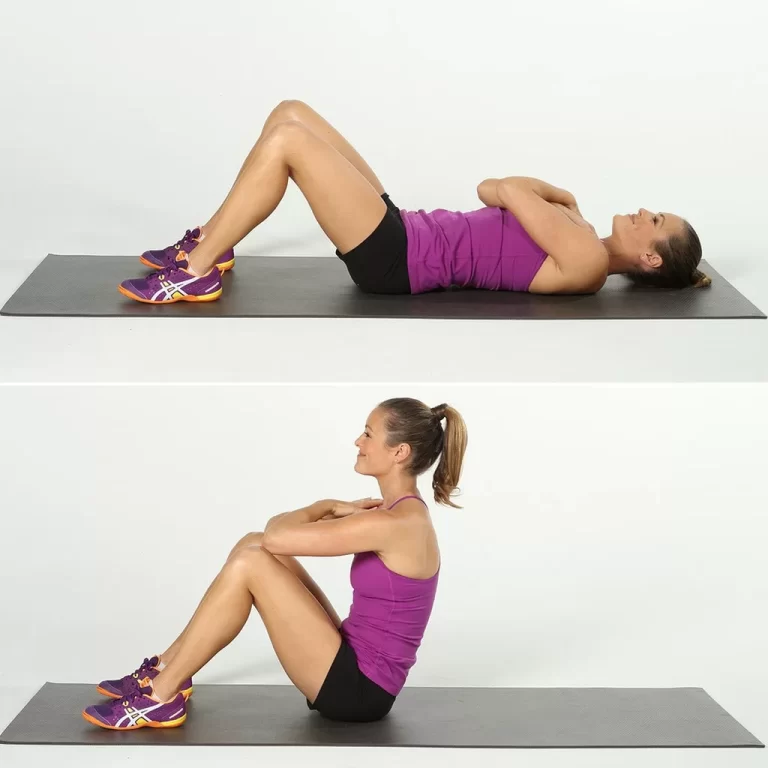Best Exercise for Hip pain
Exercise for Hip pain may help you to recover from pain and related symptoms and make your Hip more stronger to make you perform day-to-day activity with ease.
What is Hip pain?
Hip pain may occasionally be radiated down to the knee or the lower part of the leg. Joint stiffness is mostly coupled with pain in the lower extremities, making activities of daily living difficult. Putting on shoes, standing up after sitting, walking, and/or driving are all common activities that are affected.Hip discomfort can manifest itself in the front, side, or back of the hip joint.
This pain may be Radiating in the thigh, knee or lower leg and is frequent when nerves from the hip move down the leg.Muscle or joint pain might also be referred to. The following are some of the possible causes of hip discomfort that spreads down the leg.
What is a Hip joint?
This is a ball-and-socket type of joint that allows motion and gives stability to bear body weight. The socket area (acetabulum) is situated inside the pelvis. The ball part of the hip joint is in the femur. Femur bone joins with the acetabulum to make the hip joint.
The hip joint is one of the most stable joints in our body. But because it bears your body weight, it is more likely to develop arthritis and pain because of the extra pressure. Pain in the hip may be caused by injury to muscles, tendons, or the small fluid-filled sacs (bursae) that cushion and lubricate joints.
What are the causes of hip pain?
- Bursitis
- Tendonitis
- Sciatica
- Pregnancy
- Osteoarthritis
- Rheumatoid arthritis
- Iliotibial band friction syndrome
- Piriformis syndrome
- Sciatica
- Labrum tear
- Femeroacetabluar impingement (FAI)
- Trochanteric bursitis
- Fracture or trauma
Symptoms
- Hip pain and impairments may manifest in a variety of symptoms.
- Pain in the groin
- Anterior hip pain
- Lateral side hip pain
- Buttock pain
- Difficulty in moving your hip and leg
- Difficulty in walking, running, or stair climbing.
- Pain when rising from a sitting position
How exercise is helpful to relieve Hip pain?
There have many possible causes that induce hip pain, ranging from muscle strains and injuries to arthritis and inflammatory disorders. However, gently exercising the hip muscles can often help to relieve pain and restore mobility.strengthening the muscles in this area helps build stability and flexibility so you can move with ease and avoid injury.
Flexibility and strength exercises are key to relieving hip pain. Although these exercises may result in temporary discomfort, they should not cause or aggravate pain. If an exercise causes pain, stop doing it or try going at a slower or gentler pace.a person who has recently had a hip replacement should consult a doctor or physiotherapist before performing any of the exercises below.
How Stretching Eases Hip Pain?
Hip pain may result from muscle tightness or capsule tightness around the hip joint. this joint is a ball and socket joint, and it should move in flexion, abduction, extension, and rotation. Tightness in the muscles around your hip may decrease your ability to move efficiently, increasing the chances of injury when these structures are called upon to do activities like running or playing a sport.stretches for hip pain can help increase the flexibility of your muscles and allow your hip joint to do all movement easily and in the full range of motion.
When doing stretching exercises for your hip, you should move smoothly into each position until you feel a mild pulling sensation around the area to be stretched. Each stretch should be held for about 30 to 40 seconds, and then you should slowly move out of the stretch.
How Resistance Exercise Eases Hip Pain?
Strengthening the hip muscles can alleviate forces on the joint, which can help to reduce your hip pain. Improving muscle activation around the joint can also improve your overall functional mobility, allowing you to walk or run more efficiently.
There have different types of resistance exercises for your hip. These may include body weight exercises, resistance band exercises, or weight lifting machines and exercises.
However, weight training may not be the best choice if you are experiencing acute hip pain, as this may place more stress and strain on your joint and muscles, leading to more pain or injury. Working with a physiotherapist can help you know when it is appropriate for you to start performing resistance training, in addition to which ones are suitable for you and your condition,
Here we explain some Exercises for relieving hip pain.
Straight Leg Raises
How to do it?

- SLR is a simple exercise but very effective, exercise to strengthen the hip flexors, hip abductors, or gluteus muscles.
- To perform straight leg raises you to have to Lie on your back with one knee flexed and one knee extended.
- Tighten your quadriceps muscle on the front of your thigh and engage your abdominals.
- Raise your extended leg about twelve inches. Hold this position for 3 to 5 seconds.
- Lower your leg down slowly and repeat 12 to 15 times on each leg.
Single-leg bridge
How to do it?

- This exercise works your core, glutes, and hamstring muscle while giving your hips a nice stretch and promoting a good posture.
- To perform this exercise you have to supine lying and flexed your knees and move your feet toward your buttocks.
- Press your palms into the ground alongside your body.
- Extend your left leg so it is straight.
- Raise your hips as much as you can.
- Hold this position for thirty seconds.
- Do each side two-three times.
Threading the needle
How to do it?
- This exercise utilizes your glutes and hips. To perform this exercise you have to supine lying and flexed your knees and move your feet toward your buttocks.
- Place your left ankle at the bottom of your right thigh.
- Interlace your fingers around your thigh or shin as you draw your leg in toward your chest.
- Hold for up to one minute.
- Do the opposite side.
- You can increase the difficulty by straightening your lower leg.
Hip Hikers
How to do it?
- This is a great body weight exercise to strengthen your gluteus medius on the lateral aspect of your hip joint. To perform this exercise you have to Stand on a small eight-inch step stool or the bottom step of a set of stairs. Hold onto steady objects.
- Stand sideways so one leg is hanging off the edge.
- While keeping your support leg extended, lower the leg that is hanging off the edge by dropping your pelvis downward. your abdominals are engaged while you do this.
- Hold the lowered position for 2 seconds, and then slowly raise your pelvis upward. You should feel the side of your hip on the stance leg working to do this.
- Repeat the exercise 12 to 15 times on both legs.
Knee lift
How to do it?
- To perform this exercise you have to Lie on your back, extending both legs flat along the ground.
- Your right leg should be straight, pull the left knee up toward the chest.
- Put both hands on top of the knee to help pull it in toward the chest.
- Hold the stretch for ten seconds.
- Let go of the knee and gently lower the leg back toward the ground.
- Do this exercise 5–10 times on both knees.
External hip rotation
How to do it?
- To perform this exercise you have to Sit on the ground with both legs out in front.
- Flexed the legs from the knees and press the soles of the feet together.
- Put a hand on top of each knee and gently push them both down toward the floor. Apply pressure to the knees until there is a stretch, but don’t push them further than is comfortable.
- Hold the stretch for ten seconds and then relax.
- Repeat the stretch five-ten times.
Double hip rotation
How to do it?
- To perform double hip rotations you have to Lie flat on the back. Then flex the knees and bring them toward the body until the feet are flat on the ground.
- Gently rotate the knees to the right, lowering them toward the ground. Rotate the head to face the left while keeping the shoulders against the ground.
- Hold this position for 30–40 seconds.
- Slowly return both the head and knees to the initial position.
- Repeat this on the opposite side.
Lateral squat
How to do it?
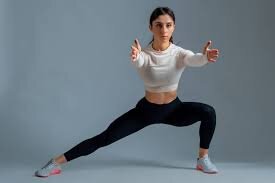
- To perform this exercise you have to begin with your feet double shoulder-width apart, toes slightly out.
- Shift your weight to your left leg and push your hips back as if you are going to sit in a chair.
- Drop as low as you can go while keeping your right leg extended. Ensure that your chest stays up and your weight is on your left heel.
- Return to the initial position, then repeat the same steps on the left leg. This is the first repetition.
Side-lying leg raise
How to do it?
- To perform this exercise you have to Lie on your left side with your legs extended and stacked on top of each other, propping yourself up with your elbow.
- If you are using an exercise band, position it just above your knees.
- Your hips should be stacked, engage your core and raise your right leg straight up as much as you can. Slowly lower back down. Repeat this on the left side.
Fire hydrant
How to do it?

- To perform this exercise you have to come on all fours limb with your hands directly below your shoulders and knees directly below your hips.
- Your left leg flexed, raise it directly out to the side until your thigh is parallel to the ground like a dog at a fire hydrant.
- Make sure that your neck and back are straight and your core muscles should be engaged throughout this movement.
- Slowly lower back to down. Repeat this on another side.
Banded walk
How to do it?
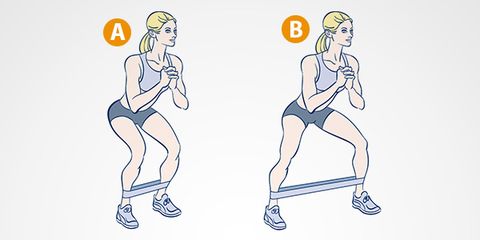
- To perform this exercise you have to Place the resistance band around your ankles or just above your knees, flex your knees slightly, and side shuffle, feeling your hips working with each step.
- Make sure to keep your feet pointing straight ahead while taking side steps. After 10 to 1 step in one direction, stop and go in the other direction.
Donkey kick
How to do it?

- To perform this exercise you have to come on all four limbs. your right knee should be flexed, raise your right foot toward the ceilings. Keep your foot flat during the entire movement, engaging your glutes.
- Push your foot up toward the sky as much as you can without tilting your pelvis for maximum impact.
Hip flexion
How to do it?
- To perform this exercise you have to stand upright.
- Extend one arm out to the side and hold on to a steady object, such as a wall, table, or chair, for support.
- Slowly elevate the left knee to the level of the hip or as much as possible while keeping the right leg straight.
- Only hold this position for two seconds before placing the right foot back on the ground.
- Repeat with the right knee.
- Do 5–10 repetitions of this exercise.
Hip extension
How to do it?
- To perform this exercise you have to stand upright.Stand upright with the legs straight and the feet shoulder-width apart. Extend both hands out in front and hold on to a chair or wall for support.
- Your left leg should be straight, raise the right leg backward without flexing the knee.
- Raise the leg as much as possible without causing discomfort, then clench the buttock tightly and hold the position for five seconds.
Hip and lower back stretch
How to do it?
- To perform this exercise you have to lie flat on the back flexed the knees and bring them toward the body until the feet are flat on the ground.
- Using the hands, pull both knees in toward the chest.
- Breathe in and pull the knees closer to the shoulders with each exhalation.
- Go as much as is comfortable, then hold the position for 30 seconds. Breathe normally.
Butterfly stretch
How to do it?
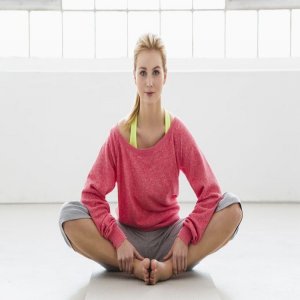
- To perform this exercise you have to Sit on the floor, flex your legs, and bring the soles of your feet together so they touch, letting your knees fall out to the sides.
- Bring your heels as near to your body as you can and lean forward into the stretch, using your elbows to gently push your knees toward the floor.
Pigeon pose
How to do it?

- To perform this exercise you have to Start on all your four limbs, then bring your left knee forward, placing it behind your left wrist with your ankle near your right hip.
- Extend your right leg behind you and let your upper limb fold over your left leg.
- If your hip is tight, allow your outer right glute to touch the ground rather than rest on your right hip. As you breathe, sink deeper into the stretch.
Figure four stretch
How to do it?

- To perform this exercise you have to sit straight with your legs flexed and feet flat on the floor.
- Place your left ankle on your right knee, loop your hands around the back of your right leg, and draw it toward your chest.
- Feel the stretch in your glute and hip.
Yoga squat
How to do it?
- To perform this exercise you have to Stand with your feet shoulder-width apart, then flex your knees and drop your buttocks directly down to the floor.
- Bring your arms in front of you in a prayer position. Breathe through the movement, allowing your elbows to gently press your thighs further apart.
Piriformis Stretch
How to do it?
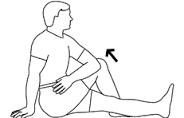
- To perform this exercise you have to be supine lying with your feet flat on the ground and both knees flexed.
- Cross one leg over the other flexed knee, resting your ankle on your thigh just above your knee.
- Place your hands under the thigh of the bent knee with your foot flat.
- Pull your thigh up towards your chest. You should feel a stretch in the back of your hip near your buttocks of the foot that is crossed on top.
- Hold the stretch for 60 seconds, and repeat three times.
Leg swings
How to do it?
- This exercise is a great choice to round out a set of stretches. Complete this dynamic movement on both sides front to back and side to side to open up your hips.
- To perform leg swings brace yourself on a steady surface, step back about a foot, and start to swing your leg like a pendulum from side to side. Try to minimize twisting your trunk.
- Then, turn your side to the wall, brace yourself, and start to swing your leg back and forth, allowing a stretch in your hip flexors, hamstrings, and glutes.
Exercise for bursitis hip pain
Hip bridges
How to do it?
- This exercise engages your hip flexors, glutes, hamstrings, and quadriceps. All these muscles play a vital role in supporting the hip joints, making this exercise perfect for hip strength.
- To perform this exercise you have to take a supine lying position with your feet flat on the floor close to your bottom and your knee flexed.
- In a controlled motion, drive your weight down through your heels to raise your hips so they are in line with your shoulders and knees.
- You should feel this upward driving movement primarily in your glutes and hamstrings.
- Sink your hips back down to the floor slowly.
- Perform 3 to 4 sets of 15 to 20 repetitions.
Lying lateral leg raises
How to do it?
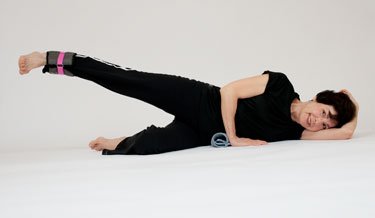
- This exercise is also known as side leg abduction. This exercise will help to strengthen and develop your tensor fasciae latae (TFL) and iliotibial band (ITB).
- This is responsible for side-to-side leg movement. It mostly gets neglected in a running routine, since the running stride is forward and backward. Thus, it is pertinent to spend some time enhancing the stability and strength it provides.
- To perform this exercise you have to Lie on your left side with your left arm extended out for balance.
- Raise your left leg as much as you can and extend it, trying to achieve the greatest range of motion possible.
- In a controlled motion, bring your right leg back down so that it is in line with your left leg.
- Complete 10 to 15 repetitions with that leg, then roll over onto your right side and perform 10.
- Finish 2 to 3 sets of 10 repetitions on both legs.
This exercise can irritate hip bursitis. If this position irritates you, try putting a pillow or foam mat between the ground and your hip joint. If this is still irritating, you can do this exercise standing.
Lying leg circles
How to do it?
Doing lying leg circles will help to promote the range of motion, flexibility, and strength in all of the muscles in the hip and leg rotation.
- Begin this exercise by lying flat on your back with your legs straight.
- Elevate your right leg to about three inches off of the floor, and then make tiny circles, your whole leg extended and in line.
- Switch to your left leg and do the same movement.
- Perform 2 to 3 sets of 5 rotations on both legs for 30 total repetitions on a single leg.
Exercises to Help Relieve Hip Arthritis Pain
Clock Tap
How to do it?
- This exercise Improves balance and stability and strengthens the muscles in your hips and legs
- To perform this exercise you have to stand next to a wall or door frame for support. Balance on left foot; hold on to wall or door frame to stay steady, if needed your knee should be straight over your ankle, with a slightly flexed.
- Tap your right foot around your left foot, as if your left foot is the centerpiece of a clock, and your right is touching numbers on a clock face. Start at noon, then tap at 11, 10, and 9.
- Retrace the numbers back to 12; then tap 1 and 2, and retrace back to 12.
- Repeat the sequence 4 times; then complete with the opposite foot.
Standing Iliotibial Band Stretch
How to do it?
- This will stretch your outside of the hip. To perform this exercise You have to Stand next to a wall for support.
- Cross the leg that is closest to the wall behind your other leg.
- Lean your hip toward the wall until you feel a stretch in the outside of your hip. Hold the stretch for thirty seconds.
- Cross the leg that is further from the wall behind your other leg.
- Repeat on the opposite side; then repeat the entire sequence 4 times.
Knee to Chest
How to do it?

- This exercise Stretches your buttocks. To perform this exercise you have to supine lying on the ground with your legs extended straight out.
- Flexed right knee and grasp your shinbone with your hands.
- Gently pull your knee toward your chest as much as you are comfortable.
- Hold this stretch for thirty seconds and then relax for thirty seconds.
- Repeat on the left side, then pull both legs in together. Repeat the entire sequence 4 times.
Hamstring Stretch
How to do it?

- To perform this stretch you have to Sit on the mat with both legs out straight.
- Extend your both arms and reach forward by flexing at the waist as far as possible while keeping your knees extended.
- Hold this simple position for 20 – 30 seconds.
- Relax back into the beginning position.
- Repeat 4-5 times.
- Be sure to stretch until a mild pull is felt in the back of your thighs. If you feel any extra pain, you should stop the exercise.
Sit-and-Stand
How to do it?
This exercise will Increases mobility and strengthen the leg, core, and back muscles
- To perform this exercise Stand in front of a steady chair that would not move, feet planted on the ground about hip distance apart.
- Press your hips back and flex your knees a little to lower yourself into a seated position.
- Then tip forward from the hips, push through your feet and up with your legs to a standing position.
- Repeat the sequence three times.
Body weight Squat
How to do it?
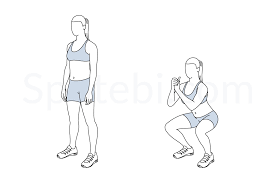
- To perform a body weight squat you have to Stand with your feet shoulder-width apart, or a little wider. If needed hold on to something steady, like the back of the sturdy chair or kitchen sink.
- Your chest should be lifted and shift your weight back into your heels while slowly pushing your hips back as if you were sitting down in a chair.
- Your feet flat and lower yourself as much as you are comfortable (such as a quarter or halfway down to where a chair would be).
- Push through your heels and bring your body back up to standing.
- Repeat the sequence 3 times; gradually build up to more reps.
When did you not do this exercise?
- If your doctor advised you to take a rest.
- If your leg bone is recently fractured.
- If you feel more pain during any exercise explain above.
- Stop doing exercise if you feel any hip discomfort.

